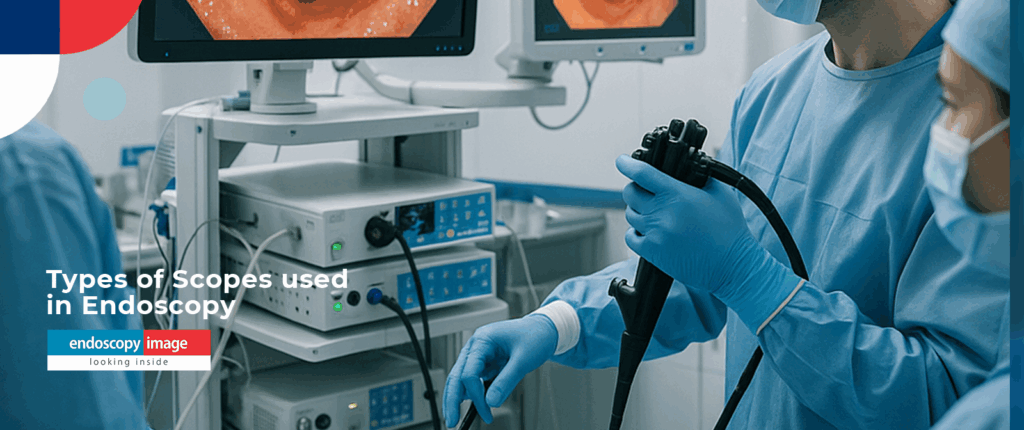Endoscopy Equipment in Mexico and Latin America: Your Complete 2025 Buying Guide
Discover the key differences between endoscopy and colonoscopy procedures. Expert guide for medical..
+1 (786) 681-5247
admin
August 19, 2025

Endoscopy is one of the most important diagnostic and therapeutic tools in modern medicine. But did you know that there are different types of scopes used in endoscopy, each designed for specific organs, patients, and procedures? Understanding the differences between these scopes is essential for healthcare professionals, clinic owners, and even patients who want to know more about how endoscopy works.
In this article, you will discover the most common types of endoscopes — from gastroscopes to colonoscopes, transnasal scopes, and pediatric instruments. We will explain their functions, advantages, and clinical applications in a clear, professional, and practical way. By the end, you will have a comprehensive overview of how each scope is used in medical practice.
A gastroscope is a flexible endoscope used to examine the esophagus, stomach, and duodenum. It is the most common scope used in gastroenterology.
Main uses:
Diagnosis of gastritis, ulcers, and reflux disease.
Biopsy of suspicious lesions.
Removal of foreign bodies.
Therapeutic procedures such as dilation and bleeding control.
Why it matters: Gastroscopes allow for quick and effective visualization of the upper digestive tract, making them essential for both diagnostic and interventional procedures.
The colonoscope is longer than the gastroscope and designed to reach the entire colon.
Main uses:
Screening and prevention of colorectal cancer.
Polyp detection and removal.
Investigation of abdominal pain, bleeding, or chronic diarrhea.
Why it matters: Colonoscopes are crucial for early cancer detection and prevention. They remain one of the most valuable tools in digestive health.
A transnasal endoscope is a thinner, more flexible scope that enters through the nose instead of the mouth.
Main uses:
Upper GI exams in patients who cannot tolerate traditional gastroscopy.
ENT procedures (ear, nose, throat).
More comfortable experience for anxious patients.
Advantages:
No need for sedation in many cases.
Improved patient acceptance.
Children require special instruments due to their anatomy. Pediatric endoscopes are thinner and shorter, designed for infants and children.
Main uses:
Diagnosis of congenital anomalies.
Investigation of digestive symptoms in children.
Therapeutic procedures adapted to pediatric patients.
Why it matters: Pediatric scopes ensure safety and accuracy without compromising patient comfort.
A bronchoscope is used to examine the airways and lungs.
Main uses:
Investigation of chronic cough and respiratory diseases.
Biopsy of lung tissue.
Removal of secretions or foreign bodies.
Key point: Bronchoscopes are essential for pulmonologists and are available in both flexible and rigid versions.
A duodenoscope is a side-viewing scope mainly used for ERCP (Endoscopic Retrograde Cholangiopancreatography).
Main uses:
Examination of the bile ducts and pancreatic ducts.
Removal of gallstones.
Placement of stents in the bile duct.
Why it matters: Duodenoscopes are specialized tools that combine endoscopy and radiology, essential for hepatobiliary procedures.
Unlike the scopes inserted through natural orifices, a laparoscope is inserted through small incisions in the abdomen.
Main uses:
Minimally invasive surgeries (appendectomy, gallbladder removal).
Diagnostic evaluation of abdominal pain.
Biopsy of abdominal organs.
Key point: Laparoscopes have transformed surgery, making procedures less invasive and recovery faster.
Capsule endoscopy uses a small, pill-sized camera swallowed by the patient.
Main uses:
Non-invasive visualization of the small intestine.
Investigation of obscure gastrointestinal bleeding.
Diagnosis of Crohn’s disease and tumors.
Advantages:
Comfortable and painless.
Provides unique access to areas unreachable by traditional scopes.
Choosing the correct type of endoscope depends on:
Target organ: GI tract, lungs, ENT, or abdomen.
Patient profile: Adults vs. pediatrics.
Clinical needs: Diagnostic vs. therapeutic.
Comfort requirements: Traditional vs. transnasal or capsule.
Practical tip: For gastroenterology clinics, a combination of gastroscopes and colonoscopes covers the majority of procedures. For specialized practices, adding pediatric, transnasal, and duodenoscopes can expand service offerings.
➡️ The main types of scopes used in endoscopy include gastroscopes, colonoscopes, duodenoscopes, bronchoscopes, transnasal endoscopes, pediatric endoscopes, laparoscopes, and capsule endoscopy devices. Each is designed for specific organs and clinical applications.
➡️ A gastroscope is used for examining the esophagus, stomach, and duodenum, while a colonoscope is longer and designed to visualize the large intestine (colon). Both are essential but serve different areas of the digestive tract.
➡️ Pediatric endoscopes are thinner and shorter to fit children’s anatomy safely. They allow gastroenterologists to diagnose and treat digestive issues in infants and children without causing unnecessary discomfort or risk.
➡️ A transnasal endoscope is recommended for patients who cannot tolerate traditional upper GI endoscopy. It offers a more comfortable, less invasive approach, often without sedation, making it ideal for sensitive or anxious patients.
➡️ Capsule endoscopy offers a painless, non-invasive way to visualize the small intestine. Unlike traditional scopes, it can reach areas that are otherwise difficult to access, making it especially valuable for detecting obscure gastrointestinal bleeding or Crohn’s disease.
The world of endoscopy is diverse, with each scope serving a unique purpose in diagnostics and treatment. From gastroscopes and colonoscopes to advanced tools like duodenoscopes and capsule endoscopy, these instruments play a central role in patient care. Understanding the differences between these types of scopes used in endoscopy helps healthcare professionals deliver better services, improve patient experience, and make informed investments in equipment.
Discover the key differences between endoscopy and colonoscopy procedures. Expert guide for medical..
Discover the key differences between endoscopy and colonoscopy procedures. Expert guide for medical..
Discover the main types of scopes used in endoscopy and their purposes. Learn..
Unlock the power of DICOM in endoscopy: Learn how this critical standard revolutionizes..
Deprecated: File Theme without comments.php is deprecated since version 3.0.0 with no alternative available. Please include a comments.php template in your theme. in /home/endoscop/public_html/wp-includes/functions.php on line 6131